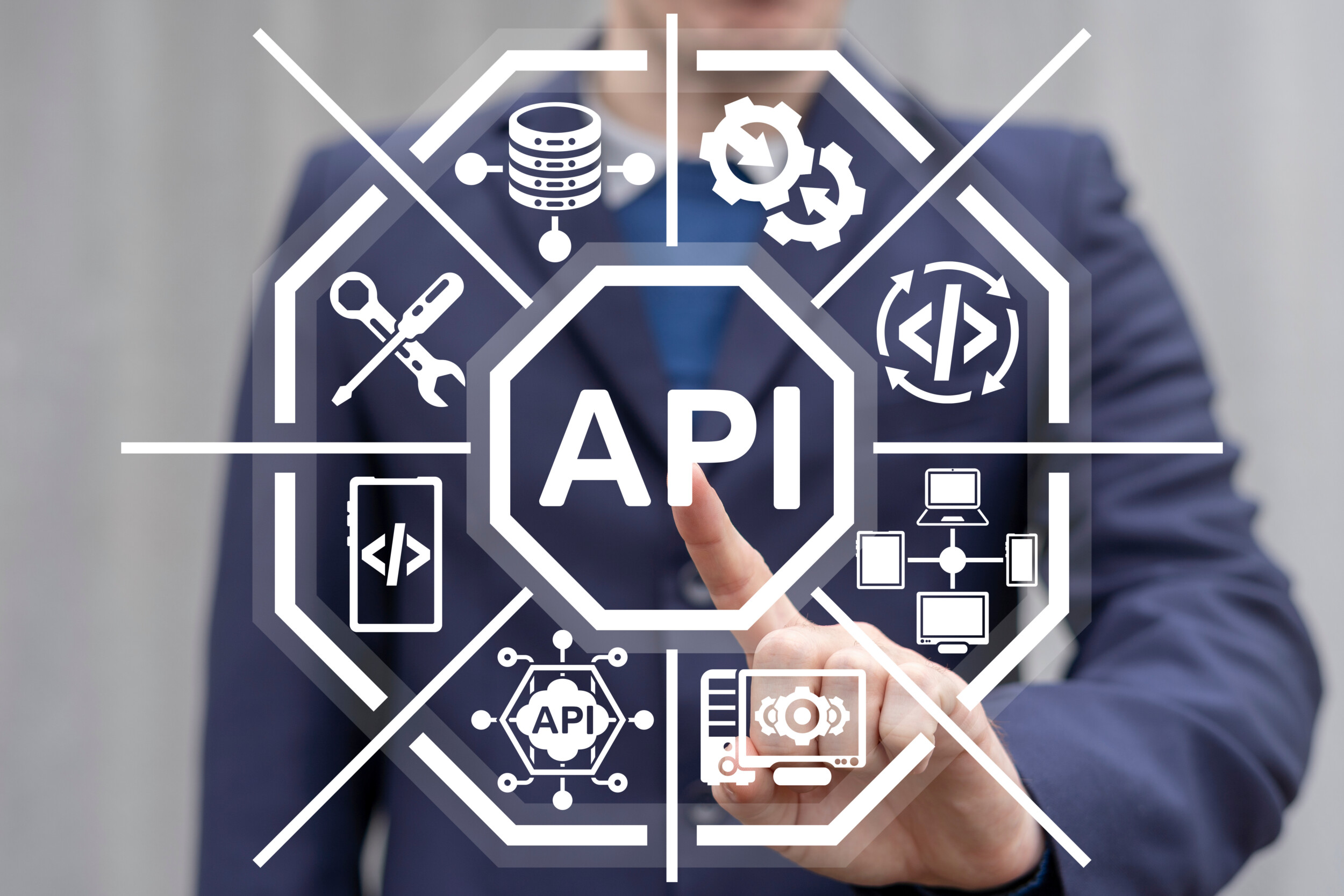In today’s fast-paced digital world, API integration is becoming essential for businesses looking to enhance their marketing strategies. By connecting different applications and systems, API integration allows for smoother operations, better data management, and improved customer experiences. This article will explore what API integration is, why it’s crucial for marketing, and how to effectively implement it in your business.
Key Takeaways
API integration connects different software applications to streamline operations.
It enhances customer experiences by providing seamless data flow.
Implementing API integration can improve marketing efficiency and effectiveness.
Businesses can automate routine tasks through API integration, saving time and reducing errors.
Staying ahead in marketing requires adapting to API integration trends and technologies.
Understanding API Integration
Definition of API Integration
API integration is the process of connecting different applications through APIs (Application Programming Interfaces). This allows them to exchange data and work together seamlessly. In simple terms, it’s like giving two apps a way to talk to each other.
How API Integration Works
When two applications are integrated via APIs, they can share information in real-time. For example, if a retail app needs to check inventory from a warehouse app, it can do so through an API. This connection helps in keeping data up-to-date without manual input.
Types of API Integrations
There are several types of API integrations, including:
Public APIs: Open for anyone to use.
Partner APIs: Restricted to authorized partners.
Private APIs: Used within an organization.
Composite APIs: Combine multiple APIs into one.
Common Use Cases of API Integration
API integrations are used in various ways, such as:
E-commerce: Connecting payment systems and inventory management.
Social Media: Sharing content across platforms.
Data Analysis: Pulling data from different sources for insights.
API integration is essential for modern businesses, as it enhances efficiency and improves customer experiences.
In summary, API integration is a vital tool that helps different applications work together, making processes smoother and more efficient. Understanding how it works can greatly benefit your marketing plans.
The Importance of API Integration in Marketing
Enhancing Customer Experience
API integration is essential for improving the customer experience. By connecting different applications, businesses can provide seamless interactions. For example, when a customer makes a purchase, their information can automatically update across various platforms, ensuring they receive timely notifications and support. This leads to higher satisfaction and loyalty.
Streamlining Marketing Processes
With API integration, marketing teams can automate repetitive tasks. This means less time spent on manual data entry and more time focusing on strategy. Here are some key benefits:
Faster campaign launches
Reduced human error
Improved collaboration between teams
Improving Data Accuracy
Accurate data is crucial for effective marketing. API integration helps ensure that information is consistent across all platforms. This reduces the chances of mistakes that can occur when data is entered manually. For instance, if a lead’s information is updated in one system, it can automatically reflect in others, maintaining data integrity. This is vital for making informed decisions.
Facilitating Omnichannel Marketing
In today’s market, customers interact with brands through various channels. API integration allows businesses to create a unified experience across these channels. This means that whether a customer is on social media, email, or a website, they receive consistent messaging. This enhances brand recognition and trust.
API integration is not just a technical necessity; it’s a strategic advantage that can transform how businesses engage with their customers and streamline their operations.
Benefit | Description |
|---|---|
Enhanced Customer Experience | Seamless interactions across platforms |
Streamlined Processes | Automation of repetitive tasks |
Improved Data Accuracy | Consistent information across systems |
Omnichannel Marketing | Unified experience across various channels |
How to Implement API Integration in Your Marketing Strategy

Identifying Your Needs
To start, understand what you want to achieve with API integration. This could include improving data flow, automating tasks, or enhancing customer experiences. Here are some steps to help you identify your needs:
List the current challenges in your marketing processes.
Determine the goals you want to achieve with API integration.
Identify the data and applications that need to be connected.
Choosing the Right Tools
Once you know your needs, the next step is to select the right tools. Consider the following:
Look for tools that are user-friendly and fit your budget.
Ensure the tools can integrate with your existing systems.
Check for customer support and community resources.
Steps to Integrate APIs
Implementing API integration can be broken down into simple steps:
Plan your integration strategy based on your identified needs.
Set up the necessary accounts and permissions for the APIs you will use.
Use the chosen tools to connect your applications.
Test the integration to ensure everything works smoothly.
Monitor the integration regularly to catch any issues early.
Monitoring and Optimization
After integration, it’s crucial to keep an eye on performance. Here’s how:
Regularly check data accuracy and flow between systems.
Gather feedback from users to identify areas for improvement.
Make adjustments as needed to optimize performance.
By following these steps, you can effectively implement an API integration strategy that enhances your marketing efforts and drives better results. Remember, successful integration is an ongoing process that requires regular attention and updates.
Highlight
To successfully implement an API integration strategy, follow these steps to ensure a smooth process and achieve your marketing goals.
Challenges and Solutions in API Integration
Technical Complexity
Integrating multiple APIs can be quite challenging. Technical complexity is a major hurdle for many businesses. To tackle this, companies can:
Hire expert developers.
Invest in training for their teams.
Stay updated on the latest API trends.
Maintenance
Even after successful integration, maintenance is crucial. Regular updates and testing are necessary to keep everything running smoothly. Here are some tips:
Set up a dedicated team for ongoing support.
Schedule regular system checks.
Document all changes for future reference.
Incompatibility Issues
Different APIs may use various data formats, leading to incompatibility problems. To overcome this:
Use data transformation tools.
Choose APIs with built-in converters.
Conduct rigorous testing during development.
Cost and Time Considerations
API integrations can be expensive and time-consuming. Businesses should:
Assess their current systems to ensure compatibility.
Calculate potential ROI before starting.
Consider starting with smaller projects to minimize risk.
API integration can significantly enhance your marketing efforts, but it requires careful planning and execution to avoid common pitfalls.
Summary Table of Challenges and Solutions
Challenge | Solution |
|---|---|
Technical Complexity | Hire experts, train teams, stay updated |
Maintenance | Dedicated support team, regular checks |
Incompatibility Issues | Use converters, rigorous testing |
Cost and Time | Assess systems, calculate ROI, start small |
Future Trends in API Integration for Marketing
AI and Machine Learning Integration
The future of API integration is heavily influenced by AI and machine learning. These technologies will allow businesses to automate processes and enhance decision-making. By analyzing vast amounts of data, AI can help marketers understand customer behavior and preferences, leading to more effective campaigns.
Real-Time Data Processing
With the rise of real-time data processing, businesses can make quicker decisions based on current information. This capability allows for immediate adjustments in marketing strategies, ensuring that companies stay relevant and responsive to customer needs.
Increased Personalization
As API integration evolves, personalization will become even more critical. Marketers will be able to tailor their messages and offers to individual customers based on their past interactions and preferences. This level of customization can significantly enhance customer engagement and satisfaction.
Expansion of IoT and API Integration
The Internet of Things (IoT) is set to expand, and with it, the need for effective API integration. Businesses will leverage data from connected devices to gain insights into customer behavior, enabling them to create more targeted marketing strategies.
The integration of AI and IoT will revolutionize how businesses interact with their customers, making marketing efforts more efficient and impactful.
Trend | Description |
|---|---|
AI and Machine Learning | Automates processes and enhances decision-making through data analysis. |
Real-Time Data Processing | Enables quick adjustments in marketing strategies based on current information. |
Increased Personalization | Tailors messages and offers to individual customers for better engagement. |
Expansion of IoT | Leverages data from connected devices for targeted marketing strategies. |
By embracing these trends, businesses can position themselves for success in the ever-evolving digital landscape.
Case Studies: Successful API Integrations in Marketing
E-commerce Platforms
E-commerce businesses often rely on API integrations to connect various systems. For instance, a popular online store integrated its payment gateway with its inventory management system. This streamlined the checkout process and reduced errors in stock levels. As a result, they saw a 30% increase in sales within three months.
Social Media Marketing
A well-known brand used API integration to link its social media accounts with its customer relationship management (CRM) system. This allowed them to track customer interactions across platforms. By analyzing this data, they improved their targeted marketing campaigns, leading to a 50% boost in engagement.
Email Marketing Automation
A company implemented API integration between its email marketing tool and its website. This enabled automatic updates of subscriber lists based on user activity. Consequently, they achieved a 40% increase in open rates and a significant rise in conversions.
Customer Relationship Management (CRM) Systems
A business integrated its CRM with various marketing tools through APIs. This integration allowed for real-time data sharing, which improved customer insights. As a result, they enhanced their customer service and saw a 25% increase in customer satisfaction.
Case Study | Integration Type | Result |
|---|---|---|
E-commerce Platforms | Payment Gateway & Inventory | 30% increase in sales |
Social Media Marketing | CRM & Social Media | 50% boost in engagement |
Email Marketing Automation | Email Tool & Website | 40% increase in open rates |
CRM Systems | CRM & Marketing Tools | 25% increase in customer satisfaction |
Successful API integrations can transform marketing strategies, leading to better customer experiences and increased sales.
By examining these case studies, it’s clear that API integration is essential for modern marketing strategies. It not only enhances efficiency but also drives growth in various sectors.
Best Practices for API Integration

Ensuring Security
Security is crucial when integrating APIs. Protect sensitive data with encryption both in storage and during transit. Use token-based authentication for API access and choose reputable service providers with strong testing protocols. Regularly review and update your security measures to stay ahead of potential threats.
Maintaining Data Quality
To ensure effective API integration, it’s important to maintain high data quality. This includes:
Regularly cleaning and validating data.
Implementing data transformation processes to ensure compatibility.
Monitoring data flow to catch errors early.
Regular Testing and Updates
Testing your API integrations is essential. Schedule regular tests to identify issues before they escalate. Keep your APIs updated to avoid compatibility problems and ensure they meet current standards. This proactive approach can save time and resources in the long run.
Collaborating with IT Teams
Collaboration between marketing and IT teams is vital for successful API integration. Establish clear communication channels and involve IT early in the planning process. This ensures that technical challenges are addressed promptly and that the integration aligns with overall business goals.
Effective API integration is not just about technology; it’s about creating a seamless experience for users and ensuring that your systems work together efficiently.
Highlight
Utilizing influencer marketing can enhance your API integration strategy by connecting with the right audience and improving brand visibility.
By following these best practices, businesses can maximize the benefits of API integration while minimizing risks and challenges.
When integrating APIs, it’s important to follow some key practices to ensure success. Start by clearly defining your goals and understanding the needs of your users. Make sure to test your APIs thoroughly before going live, and always keep documentation up to date. For more tips and a free strategy session, visit our website today!
Final Thoughts on API Integration for Marketing
In conclusion, API integration is essential for modern marketing strategies. It helps businesses connect different software tools, making it easier to share data and automate tasks. This not only saves time but also improves customer experiences. By using APIs, companies can quickly adapt to changes and stay competitive in the market. As technology continues to evolve, embracing API integration will be key to achieving marketing success. So, if you want to enhance your marketing plans, consider integrating APIs to unlock new opportunities and drive growth.
Frequently Asked Questions
What does API Integration mean?
API Integration is when different software applications connect and share information using APIs. This helps them work together better.
Why is API Integration important for marketing?
API Integration is important because it helps businesses improve customer experiences, streamline their marketing tasks, and ensure data accuracy.
How can I start using API Integration in my marketing plan?
To start using API Integration, first identify what you need, choose the right tools, and follow steps to connect them.
What challenges might I face with API Integration?
Some challenges include technical issues, concerns about data privacy, and the costs and time needed to set everything up.
What are the future trends in API Integration?
Future trends include using AI for better predictions, processing data in real-time, and personalizing marketing efforts.
Can you give examples of successful API Integrations?
Yes! Successful examples include e-commerce platforms connecting with payment systems and social media tools automating posts.










